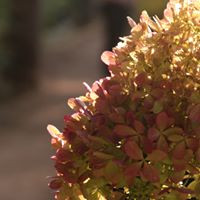hydrangea pruning
Posted by Megan Nichols on Apr 20th 2020
Late winter pruning is upon us, and one of the most commonly asked about shrubs is hydrangeas. It’s no wonder - Hydrangeas are pretty much the official flower of Minnetonka, and they’re impossible not to love.
Time of pruning depends on the variety of hydrangea. End of March to beginning of April is the right time to prune panicle hydrangeas. It’s important to prune panicle types before they begin growing leaves, and its best to wait until severe cold has passed, which can cause winter damage to the branch tips.
So how do you know if you have a hydrangea that needs to be pruned now? There are different kinds of hydrangeas that require different care, and it can be hard to know which is which.
It’s helpful to know the name of your hydrangea. Panicle hydrangeas include: Limelight, Little Lime, Quickfire, Little Quickfire, Strawberry Sundae, Vanilla Strawberry, Fire Light, Bobo, and many more.
If the hydrangea in question wasn’t listed here, or you don’t know what kind it is, consider its bloom habit. Panicle hydrangeas start white or lime green and turn to pink or red, some color up very quickly, or as is the case with Limelight, very slowly and not until fall. Panicle style hydrangeas also have stiff stems and a cone shaped or lace cap flower.If the hydrangea has big, white mophead flowers and is floppy, or has blue or pale pink flowers when it blooms, or if it is a climber or has oak shaped leaves, it is not a panicle and does not want to be pruned right now.
If you’ve determined you do indeed have one, or several, panicle hydrangeas, let’s get pruning!
Basic Steps
Young panicle hydrangeas should focus on growing, so they do not need to be pruned. Once the hydrangea is 2-3 years old, pruning can begin. Prune back each year by about 30-50% to maintain shape and promote blooms.
Prune just above a set of buds before the plant produces leaves. The buds will look like two little bumps across from each other and can be found all along each branch.
Panicle hydrangeas bloom on new wood, and new wood growth comes from the last set of buds before the end of the branch. If the shrub leafs out and is then pruned, the buds that were supposed to become blooms have been cut off and the shrub won’t bloom. If this happens, don’t worry, the shrub will be fine but you’ll have to wait until next year for blooms.
Older shrubs will have large, woody stems. Cut these out with a large loppers to promote larger flowers.
Make the pruning cut at a 45 degree angle. This allows the water to run off the end of the branch rather than sit on top of it, which can promote fungus growth and cause rot.
Fertilize when new growth begins and wait to enjoy the show!

